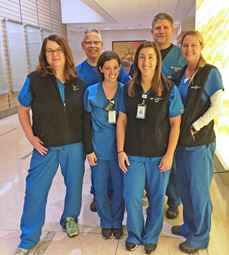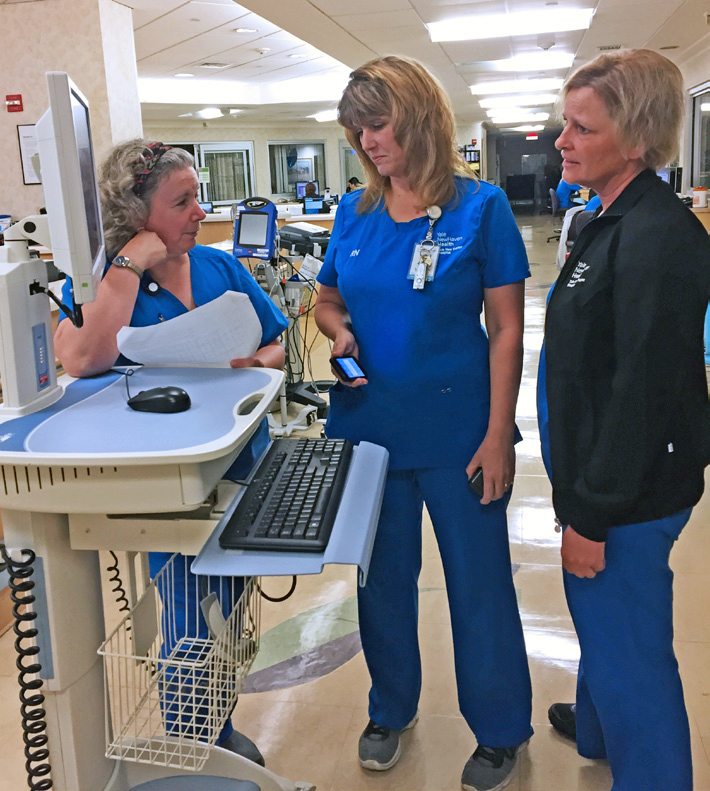A look at: Adult SWAT nurse team


YSC SWAT nurses include (l-r): Elaine Zarro, RN; Gary Bouley, RN; Taryn Zamary, RN; Meghan Petrocelli, RN; Andrew Holley, RN; and Brenda Jersey, RN. Saint Raphael Campus SWAT nurses include (l-r): Connie Cole-Ingber, RN; Sherri Hopkins, RN; and Melanie Viets, RN.
Taryn Zamary, RN, never knows what she’ll have to deal with during her
12-hour shift.
Her “unit” is actually a large portion of the York Street Campus, and at any time, she could be paged to assist with a Rapid Response Team call, help transport a critically ill patient, consult on a particularly complex case or any of dozens of other scenarios.
Zamary is one of 24 Yale New Haven Hospital “SWAT” nurses – experienced nurses with critical-care, advanced cardiovascular life support (ACLS) and trauma nurse core course training.
SWAT nurses at both campuses cover adult inpatient units and other areas, including the Emergency Department and diagnostic imaging and, at the YSC, Smilow outpatient areas and Yale New Haven Psychiatric Hospital.
They are integral members of the hospital’s adult Rapid Response Team, which is called in to assess and treat patients whose conditions are quickly deteriorating. SWAT nurses also assist with Stroke Code calls, as well as Code Blue calls, for patients in shock or cardiac arrest.
While these calls take priority, SWAT nurses aim to prevent these types
of incidents. They conduct rounds using a tool called the Rothman Index
to help determine which patients’ conditions could deteriorate. The index combines vital signs, certain lab test results, heart rhythm patterns and nurse assessments and creates a score. Because the tool interfaces with Epic, SWAT nurses can monitor real-time Rothman Index scores remotely within the hospital.
Other SWAT nurse duties include helping inpatient nurses assess patients who don’t seem quite right, or validating the unit nurses’ patient assessments.
“Nurses on the medical floors can have five or six patients,” Zamary said. “We are a second set of eyes, and can help predict whether a patient’s condition might worsen.”
SWAT nurses may also support transport of certain high-risk patients to MRI, CT and nuclear medicine scans; help with central line placement; and educate staff on specialized equipment and skills, such as chest tubes and port-a-caths.
“This position combines clinical skills, education and consultation,” said Connie Cole-Ingber, RN, SRC SWAT nurse. “We are here to support staff, and they know there’s someone they can call when they need help.”
“SWAT nurses essentially bring critical care to patients, wherever those patients are,” added Laura Jansen, RN, patient service manager, Nursing Resource Operation Center, YSC. “They act as a safety net.”
